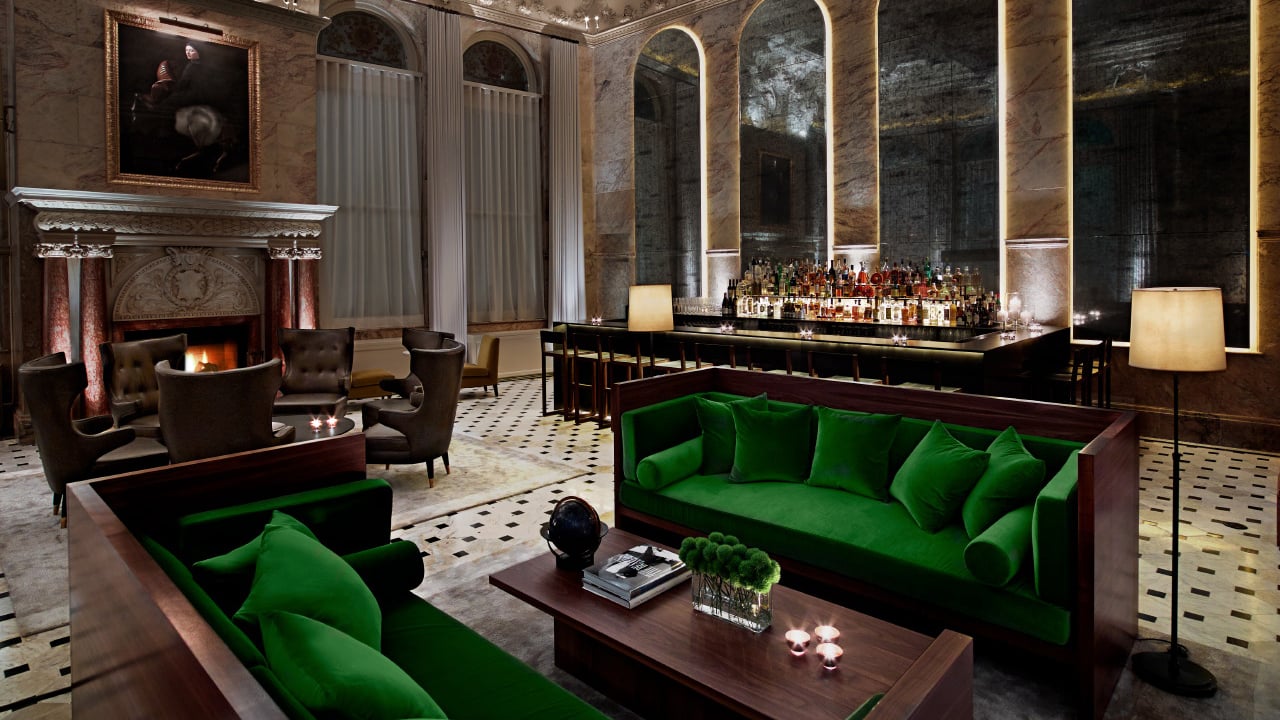
October 2, 2017
The Changing Face of Hotel Design: Shaping the Traveler Experience
A Q&A with Yabu Pushelberg on the emergence of authenticity and experience as driving values in hospitality design.
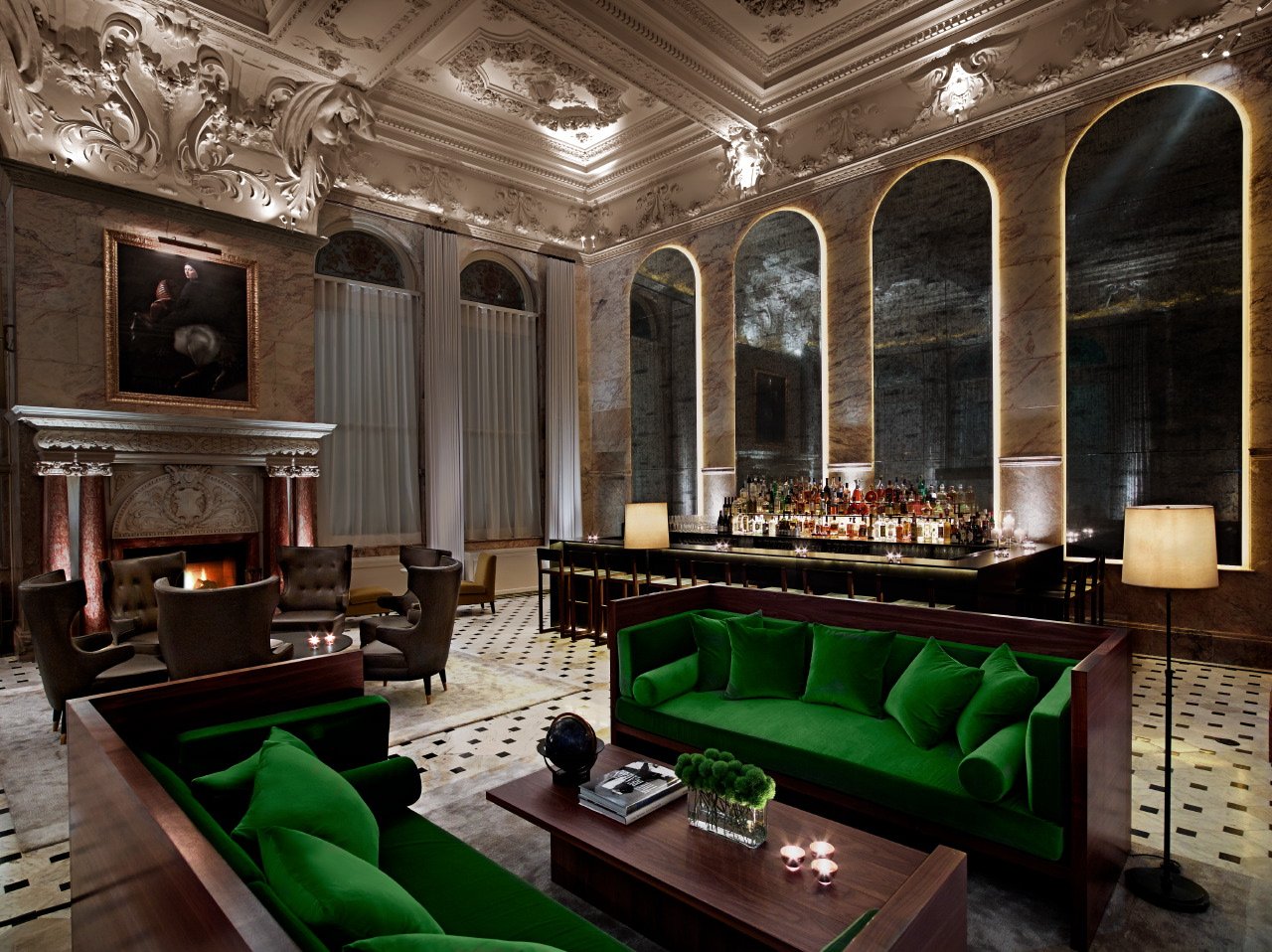
For the past three years, Susan S. Szenasy, Metropolis’s director of design innovation, has been leading a series of discussions with industry leaders on key issues surrounding human-centered design. On a recent visit to the New York offices of the design firm Yabu Pushelberg, she hosted a panel with its members and developer Lightstone Group on the topic of hospitality design. In a rapidly changing industry that places value on authenticity and experience, Szenasy posited questions on how hotels are designing to be both distinct and accommodating to locals and travelers alike. What follows is an edited transcript prepared by Claudia Marina.
Susan S. Szenasy, director of design innovation, Metropolis (SSS): Some exemplary hotel design emerged after the Great Recession. Where is hospitality design now?
Glenn Pushelberg, founding partner, Yabu Pushelberg (GP): There was a huge movement in hospitality design around March 2008 based on high design. It was thought that the more design you put into a hotel, the more attractive it would be to guests—and it worked for a long time. Hotels became more and more excessive for no real purpose other than to create bombastic ideas. When the recession hit, consumers realized that they were putting a lot of money into staying at these hotels and getting very little service in return, so there came a shift in the idea of luxury. Those of us designing hotels had to edit the design so that it was simpler and focused back on to the kinds of hotel experiences consumers wanted.
SSS: What does this new idea of luxury mean for designers?
Marcia MacDonald, design director, Yabu Pushelberg (MM): From my perspective, it has a lot to do with respect to detail and honesty in the use of materials, which might come back to a respect for the craft. I think there’s expectation now for a trueness to the things people touch and feel. They want that to be infused in their daily lives, even in a hotel room.
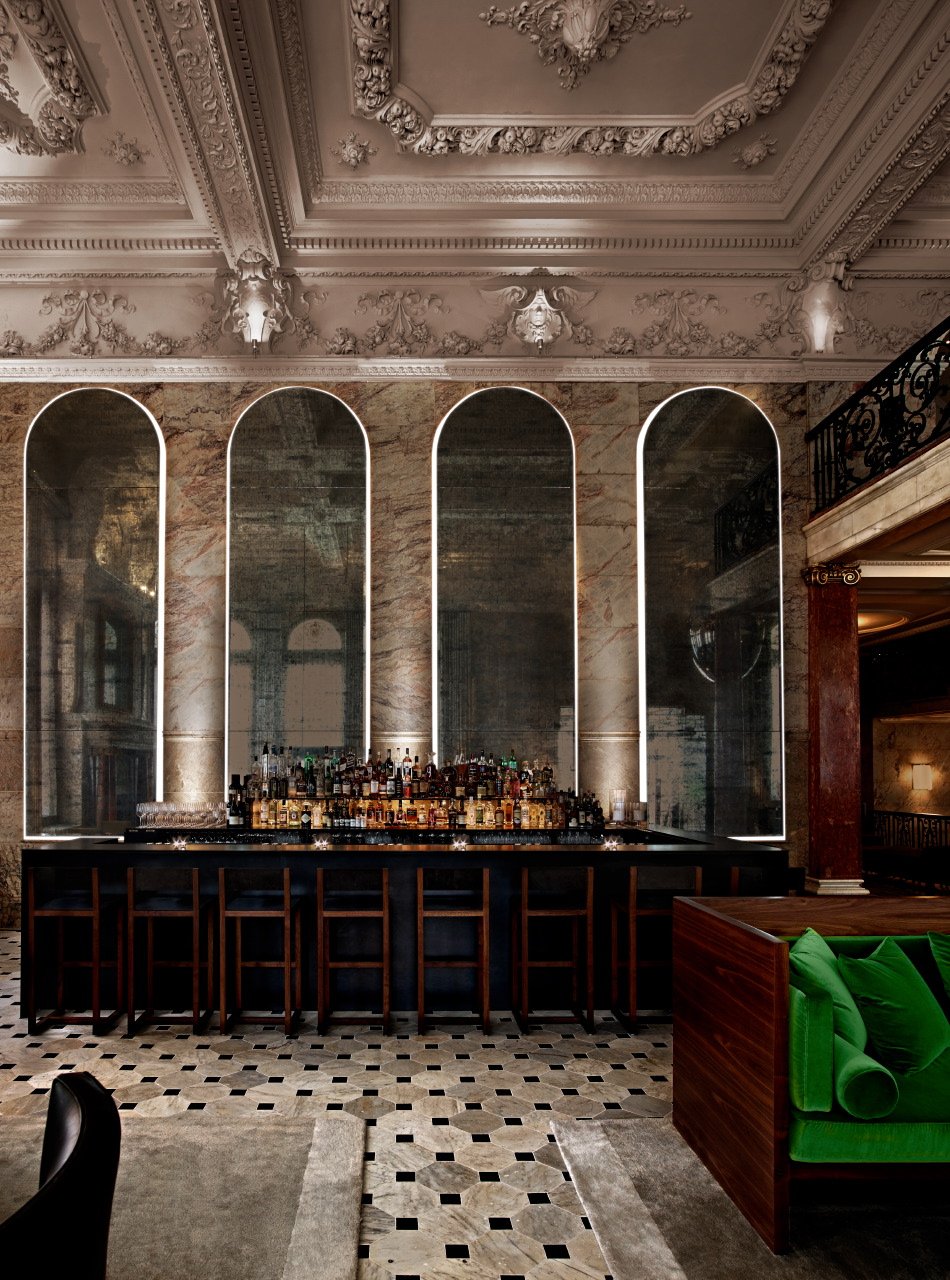
SSS: This expectation is prevalent everywhere now, whether in college campus design or urban design. It’s all very much understanding where you are and what your context is. We can’t just plunk the same design everywhere, even though we did that in the early part of the century. If you design a hotel in Dubai, it shouldn’t be the same building that’s in New York because the climate and culture are different. Can we talk more about that?
Audra Tuskes, creative director, Lightstone Group (AT): The trend back then in hotel and hospitality design was the new and different—and that’s what people based their hotel stay on. Nowadays, design in this sense is really the minimum entry point. People expect much more in terms of unique experiences, and that’s what it means to tap into context. What is localization about? How do we deliver that in the hotel space to the consumer?
I’ve traveled and stayed in a lot of places because I work in hotel development, but one of the best experiences I’ve ever had wasn’t even in a hotel—it was in a yurt. There was this great bed as the focal point, and it was so simple—hardly what we would call “designed.” I think we sometimes have to tap back into this very rudimentary notion of dwelling.
GP: Experiences like that are actually much more fulfilling because, hundreds of years ago, somebody perfected the hotel experience. It’s this idea of going back to the tradition of inn keeping where you are in a person’s home rather than creating systems and repetition.
SSS: It’s really important to bring a connection to the environment and to think about what makes us the creatures that we are regardless of age or culture. To a certain degree, we all value the same things. I’m curious to hear your take on what a service like Airbnb is doing to hotels. People want that experience of the yurt or staying in someone’s home, so how does that change what hotels do?
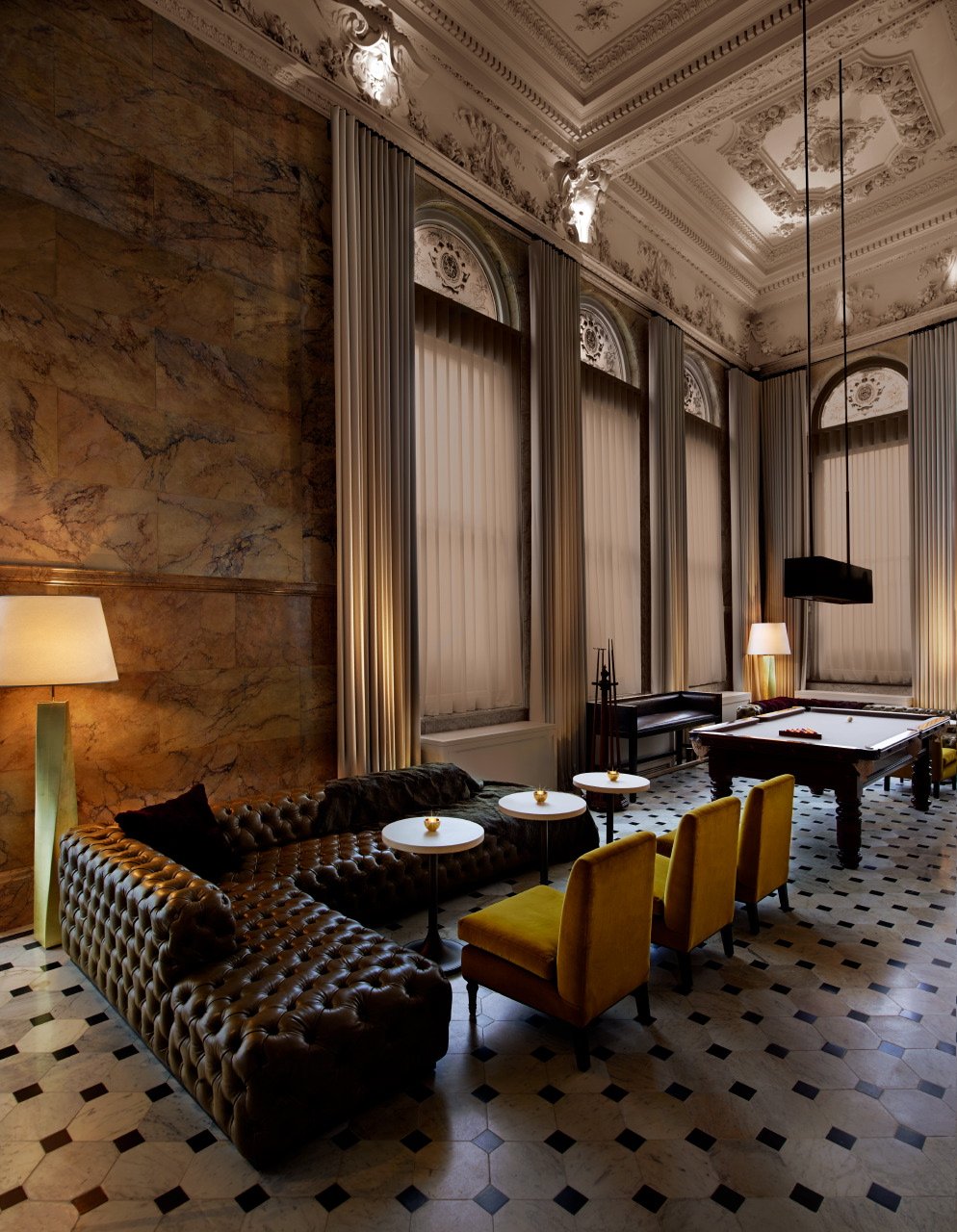
MM: There are people who would just never stay at an Airbnb, but I think larger brands are trying to understand that they can’t provide just one package. When we were conceptualizing Moxy Hotels, we created a narrative of who we thought would use this hotel. They were millennials and non-millennials, and we kept that in mind when we were designing the space. It needed to work for the locals as much as it did for those visiting the city.
GP: We went through a period where hotels were designed for specific tribes. The problem with that was that designers and customers are constantly migrating to the next project. A Hotel has greater longevity and purpose if it’s a place where you get disparate types of people together. When we opened the London EDITION, there was magic happening in the hotel on opening night. There was an energy that came from the design of juxtaposing this wonderful old Berners hotel, which we kept the frame of, with an infusion of art, modern furniture, and color. It wasn’t just one big design, but collection of the parts and the local community brought in through the arts.
SSS: What does a public space like the lobby offer this group you’re designing for? Lobbies are like living rooms but larger. How are they designed now?
AT: As we move away from the cookie-cutter template, there’s an increased desire for flexibility, but designing for that is not simple. Moxy Hotels is all about smaller rooms with large public offers. In theory, the idea is that those who stay at a Moxy are not spending a lot of time in their rooms. What we think has potential in this concept is the idea of taking the dormitory or hostel format and infusing it with character by thinking about the amenities in the common spaces and making them feel like a genuine part of the neighborhood where we’re developing these hotels.
The public areas at Moxy Hotels are infused with choices with a couple of spaces that flex between functions. We figured out that people don’t want to sit in their room and eat out of the mini-bar but would rather meet somewhere commonly. We have to design for people to have the ability to participate and watch even if they don’t want to engage.
GP: An example of that at Moxy is that there is no check-in desk. You check in at the bar. We have to think, how do consumers live differently today than how they did in the past? We like choices. We want to be able to decide if we want a full breakfast in a restaurant or a snack in the lobby, whether we want to work in a quiet corner of the lobby or a separated area. We are developing one hotel where there are two levels of spaces that change where guests could hang out. There are some tables or sofas that you can eat at, but there is no segmentation at all in those public spaces. However, within these spaces, there are more private corners and more public areas.
SSS: Are, then, lobbies designed like today’s workspaces to be fluid? Can guests move furniture around?
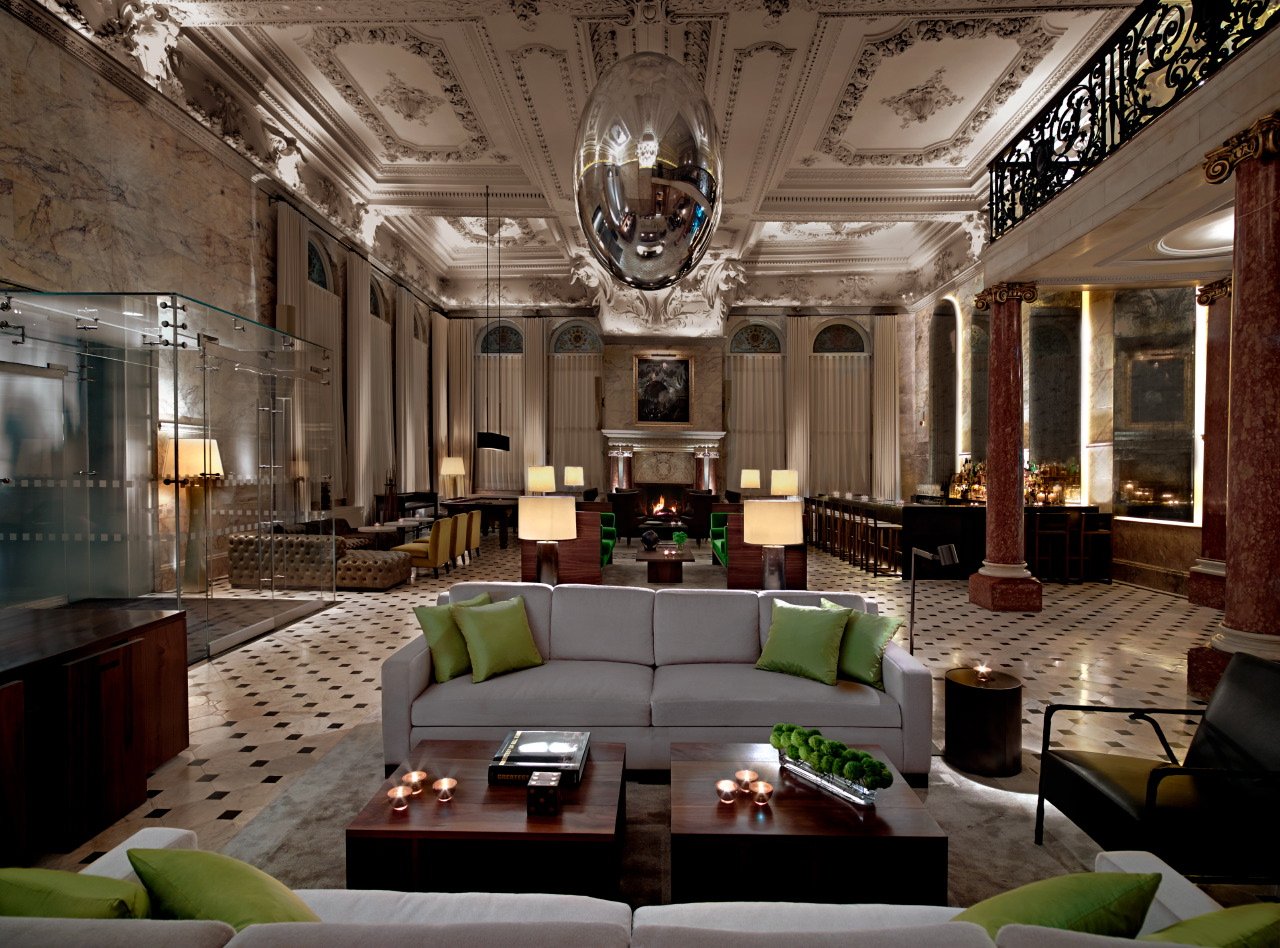
AT: We’re still looking for that. But to the point of flexibility, hospitality spaces in general are being thought of as public spaces that really develop for the community to facilitate meeting and working. In the hospitality industry, we’re looking a lot at these co-working spaces as they become more prevalent and thinking about what that type of space means and how it might look. I know that certain co-working spaces are looking at hotel models as well, and we’re on the verge of those two things coming together and becoming one hybrid.
SSS: So there seems to be an understanding of what hospitality is really about. It’s just as much about comfortable chairs as it is about emotion. In order for these spaces to work, there needs to be a hardcore understanding of what people need and how they interact.
GP: At the same time, you do have to be careful. You don’t try to do everything for everybody in a space because oftentimes you end up with nothing.
MM: I’m thinking about a client who is staying at the same hotel in New York, 11 Howard, which has a very open check-in system where you walk up to a table and check in with an iPad. For me, that’s great, but he’s a bit older than me and found it disconcerting and really awkward. So how do you design these open, gathering spaces for the comfort of multiple generations? I think as an industry we’re all really excited about these new processes, systems, and technology, but we have to stop and think about the people for whom it doesn’t work and how to accommodate them.
GP: It goes back to giving guests choices and recognizing that, as technology and the way we live change, some things will become more important than others. At some point, for example, we won’t have televisions in hotel rooms, but if you took televisions out of rooms tomorrow people would not stay in your hotel. As a hotel guest, I hate the segmented service where you tip separate people to open the door for you, take your luggage, and carry your luggage to the doors. It’s so old-fashioned. But if you had someone that did all three and at the end of the service had you check in on iPad and be done, it’s more modern. These are the less tangible designs that emerge from understanding customers.
SSS: That’s the ideal complementary relationship of technology and service. If you have just the technology, like Marcia’s anecdote, it can be disorienting or even impersonal to some while fine for others. I think what you described is a really important part of where hospitality needs to be, which means that there is a service component no matter what.
GP: There’s a real need for services, but I also think that we live in a very fast world and we want choices. If you’re traveling in China today, you need help. A person may be comfortable with technology in some situations or a human in others.
SSS: Finally, there’s the urban hotel idea, which is very different from anywhere else because the whole city is seen as your playground. Whether in New York or Atlanta, we’re seeing the effects of rebuilding neighborhoods with mixed-use developments going up everywhere and massive densification. There is a hospitality aspect in the mix when everything is put together. How is that shifting the hotel design?
GP: It’s not only about densification but also about where tourism is going. In 2008 New York had 38 million tourists. Today number is closer to 52 million. In less than 10 years, globalization is affecting the way we build in cities like New York, London, and Tokyo. Hotel rooms are essentially getting smaller and needing to fit into neighborhoods that wouldn’t traditionally have hotels like the Jane Hotel in West Village, which is retrofit into a historic landmark. I think in places like these where you have to think harder, like what we’re doing with Moxy Hotels in New York or the London EDITION, it’s important to help change the game. It’s not necessarily about having big rooms with big money to spend, but maybe it’s more in designing a $150 chair and being smart. The challenges are much more interesting from a design perspective.

Panelists included:
Yabu Pushelberg: Marcia MacDonald, design director; Glenn Pushelberg, founding partner
Lightstone Group: Audra Tuskes, creative director
Moderator:
Susan S. Szenasy, director of design innovation, Metropolis magazine.
The Metropolis Think Tank series is presented in partnership with Arper, Lutron, and Wolf Gordon.





